For many astronauts, a spacewalk is the ultimate aspiration, but only an elite few can achieve it. And Cady Coleman — who spent six months aboard the International Space Station in 2010 — is quick to point out that it has NOTHING to do with Sandra Bullock’s glamorous portrayal in Gravity.
Coleman actually advised the actress on how to make her spacewalk believable in the film, during an intergalactic phone call from the ISS.
But in her new book, Sharing Space, she describes the painful process of wearing bulky, unisex EVA (extravehicular activity) suits.
The situation became even more difficult to manage when, in 2003, NASA decided to eliminate the smaller size, forcing her to perform critical operations wearing a suit in which she could “do a hula dance.”
“To be clear, at 5’4″, I’m not particularly short, and my arms are only shorter than those of male astronauts,” she explains. “But I had no choice but to adapt to the equipment that was available – and like many things, even back then, the equipment was primarily designed to fit men.”
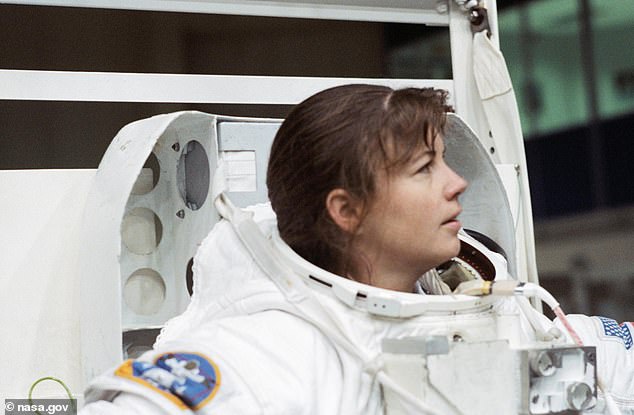
As she puts on her oversized EVA, Cady remembers that “one size” usually meant one size fits all guys.
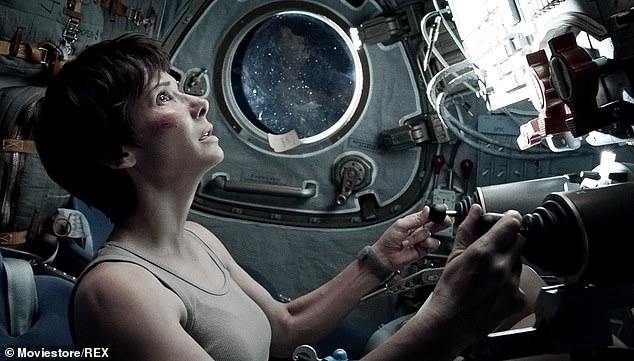
Coleman advised Sandra Bullock on how to make her spacewalk in the movie Gravity believable, during an intergalactic phone call from the ISS.
“One size fits all usually meant one size fits all guys.”
To understand why this was so important, she explains that the EVA spacesuit is unlike any other set of clothing.
“It’s hard to work in a suit, even if it doesn’t fit you perfectly, and even harder if it’s too big. And remember, your ability to work in that suit is literally a matter of life and death.”
The process of donning the suit takes about an hour and can only be done with the help of a team of suit technicians – NASA’s equivalent of Broadway dressers.
First, there’s the adult diaper. You may not need it, she says, but it’s an insurance policy just in case.
Next up: a standard sports bra, “almost always shrunk beyond recognition in NASA’s industrial dryers.”
The next layer is long underwear, to absorb sweat and give the astronauts an extra layer of cushioning from the hard edges of the suit.
“Now here’s a crucially important garment: the LCVG, short for Liquid Cooling and Ventilation Garment. The LCVG looks like a wetsuit designed by a performance artist. Tubes of water have been woven through the fabric in all directions, like oversized veins.
“When you slide inside a 300-pound spacesuit, your body heats up quickly, and your LCVG allows you to regulate your body temperature with an adjustable but hard-to-reach button located on the front of your suit.”
Additional padding is then added: elbow pads, knee pads, three-inch thick hip pads and a four-inch thick crotch pad, followed by a belt to keep it all in place.
“I look nothing like Sandra Bullock in Gravity, donning her spacesuit with her little black shorts and tank top and launching herself into the stars; instead, in LCVG, I look like an ungainly Egyptian mummy who has just emerged from a tomb after several thousand years.”
Only then will she be able to put on her real spacesuit.
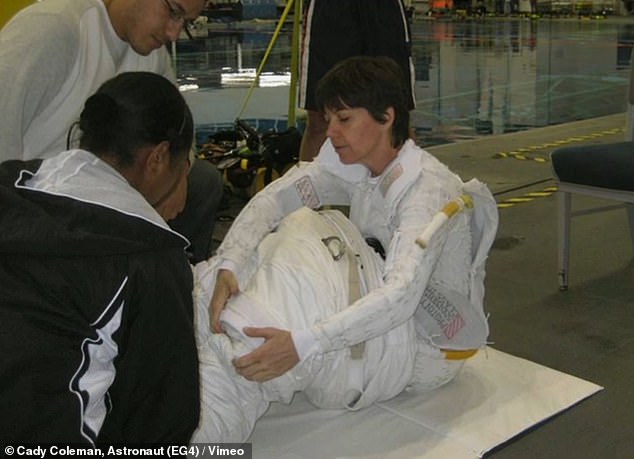
The process of donning the suit takes about an hour and can only be done with the help of a team of suit technicians — NASA’s equivalent of Broadway dressers.
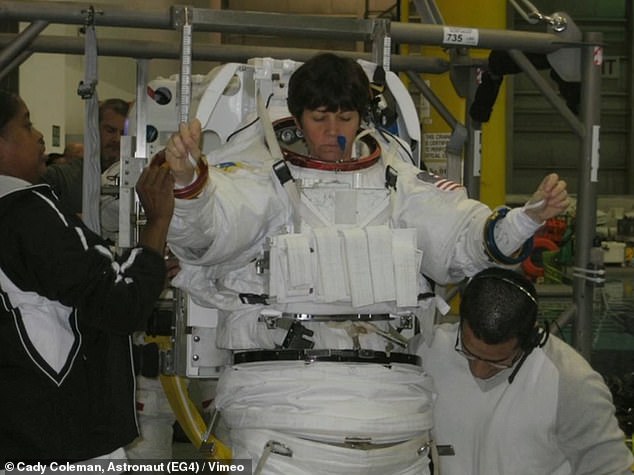
“I bend down and tilt my head and shoulders back, I slide up and inside the top, sticking my arms out first, followed by my head – like a turtle”
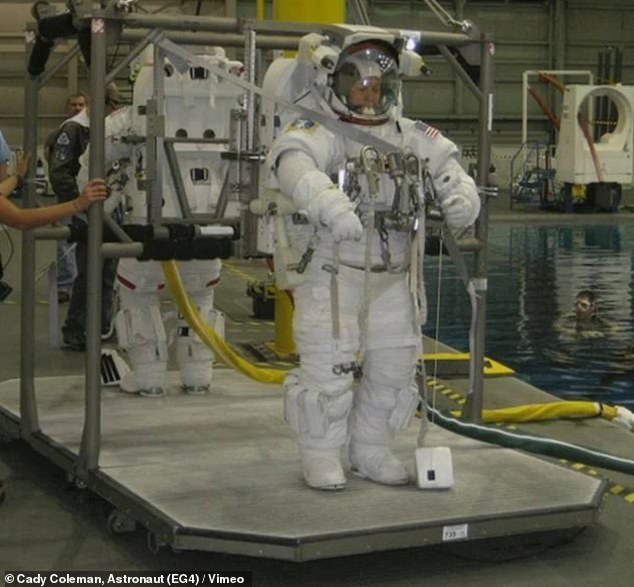
Ultimately, the helmet seals the deal – literally
“The bottom part comes first. My dexterity already limited by the water tubes pressing against my long underwear, I lie on my butt and slide forward into the bottom of the spacesuit until my feet are inside the boots. Then, with a huge one-two-three, hoist yourself up, the technicians lift me to my feet.
“At this point, the suit technicians add even more padding to the inside of the lower half of my suit, stuffing it inside the waistband. “Don’t be shy!” I tell them. “The more padding, the better!”
“Held in place by the valiant technicians, I waddle a few meters and climb onto a platform, where the top half of my spacesuit is secured to the top of a support. I bend down and tilt my head and shoulders back, sliding up and inside the top, sticking my arms out first, followed by my head—like a turtle.
“Technicians attach the top of the spacesuit to the bottom. They also place a communications helmet on my head. It has a leathery Rocky and Bullwinkle meets Amelia Earhart look and allows me to talk to Mission Control.”
The next piece of clothing to put on are gloves.
“Each astronaut has their own protocol, which includes moleskin padding and bandages. I slide my fingers inside the glove liners, making sure the seams are facing outward, and slide each finger into the appropriate slot. The big gloves come next, locking into place.”
Ultimately, the helmet seals the deal. Literally.
“If my nose itches in the next six hours, so be it. I am now isolated from the outside world.”
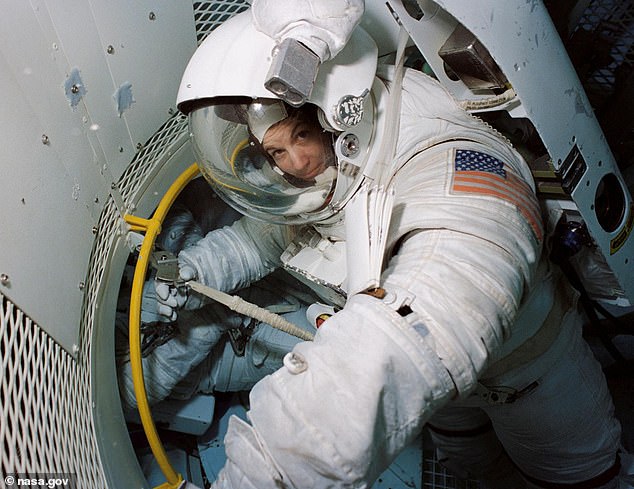
“If my nose itches in the next six hours, so be it. I am now isolated from the outside world.”
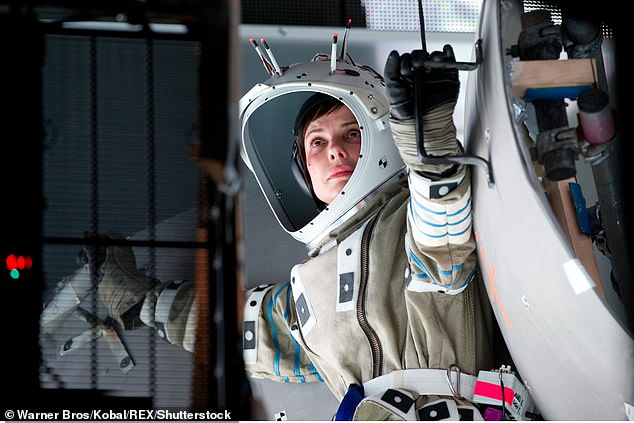
Sandra Bullock makes it look so easy…
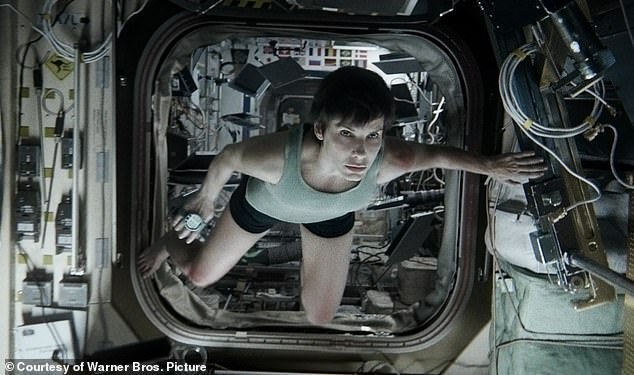
“I look nothing like Sandra Bullock in Gravity…I look more like an ungainly Egyptian mummy that just came out of the tomb.”
Work during a spacewalk typically involves repairing parts of the ISS that are broken: replacing a pump, fixing a cooling system, rerouting electrical power, or installing new solar arrays.
During pool training sessions, they train for six hours straight – “but EVA is one of those experiences that requires so much concentration that you don’t really notice the time,” Cady says.
“I also don’t notice the discomfort of my suit once I’m submerged. I focus intensely on the task at hand. I remind myself to relax any muscles that don’t need to be tensed, in order to preserve my energy.”
At the end of the session, the astronaut is stripped of each layer of clothing in reverse order, before sprinting to the bathroom to relieve himself.
“I’m always surprised to see myself in the mirror,” Cady said. “My arms and legs are covered in red and purple bruises and abrasions. Sometimes I bleed from where the suit and I struggled to get into a particularly awkward position.”
“My fingers are raw from the blows I received in my gloves, and the nails are often bruised, which can sometimes result in the loss of a nail. I was so focused on the task at hand that I didn’t even realize it until now.
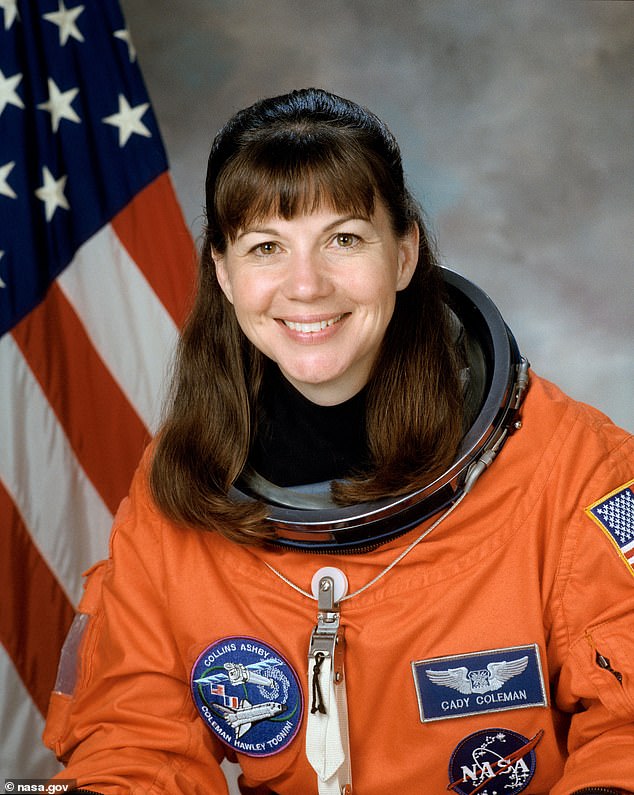
At the end of the session, the astronaut is stripped of each layer of clothing in reverse order, before sprinting to the bathroom to relieve himself.
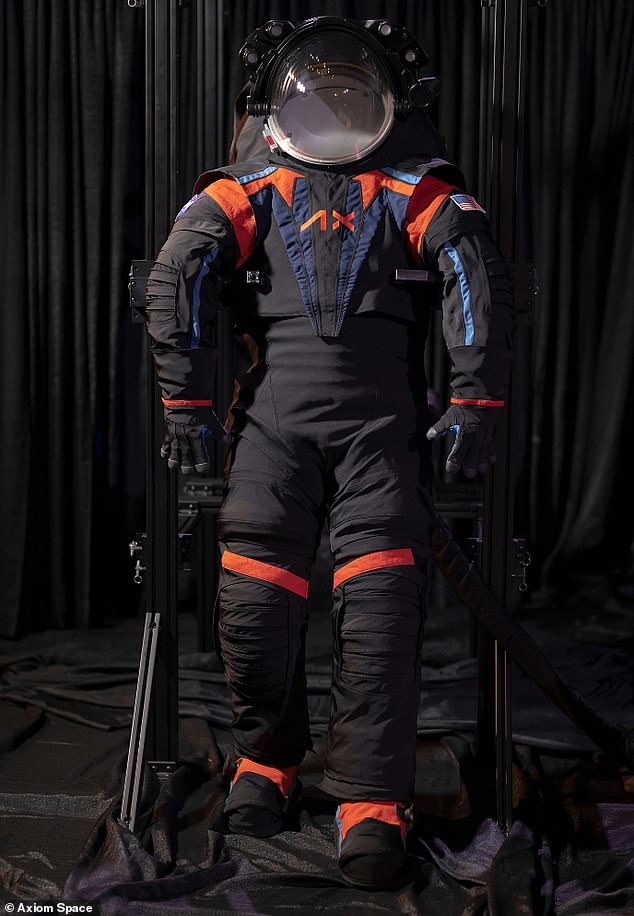
When NASA’s Artemis spacecraft takes the first woman to the moon, she’ll do so in a redesigned spacesuit
“The bumps and bruises are a daily reminder that the medium suit doesn’t really fit me. Even with all the extra padding, I could still do a hula dance in the medium suit. I have to strain to reach into the front of my suit to grab anything, which makes it harder to access tools on my mini workstation and harder to perform EVA tasks in general.
“I crush my arms and torso against the sides and armholes every time I try to reach things. Even with the padding, I’m a disaster when I take it off.”
Fortunately, things have changed since Cady made her pioneering trip to space, opening the program – and spacewalks in particular – to a wider range of people.
“In the last few years, we have seen several women perform spacewalks and witnessed the first all-female spacewalk by Christina Koch and Jessica Meir,” she said.
“And… when NASA’s Artemis takes the first woman to the moon (in 2025), she’ll do so in a redesigned spacesuit.
“I hope it fits him like a glove.”
Sharing Space: An Astronaut’s Guide to Mission, Wonder, and Change by Cady Coleman is published by Penguin Life, July 2